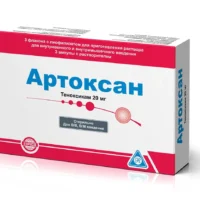Description
Teraflex Advance (Glucosamine, Chondroitin, Ibuprofen) Capsules
Ingredients
- Glucosamine – xxx mg
- Chondroitin – xxx mg
- Ibuprofen – xxx mg
Dosage
Take 1 capsule orally with a full glass of water, three times a day.
Indications
Teraflex Advance capsules are indicated for the relief of joint pain and inflammation associated with osteoarthritis.
Contraindications
Do not use Teraflex Advance if you are allergic to any of the ingredients, have a history of stomach ulcers, or are pregnant.
Directions
Follow the dosage instructions provided or as directed by a healthcare professional. Do not exceed the recommended dose.
Scientific Evidence
- Studies have shown that the combination of glucosamine, chondroitin, and ibuprofen can provide significant relief from osteoarthritis symptoms.
- A meta-analysis published in the Journal of Arthritis Research & Therapy concluded that the use of glucosamine and chondroitin is effective in managing osteoarthritis pain.
Additional Information
Teraflex Advance capsules should be stored in a cool, dry place away from direct sunlight. Consult a healthcare professional before starting any new supplement regimen, especially if you have underlying medical conditions or are taking other medications.





